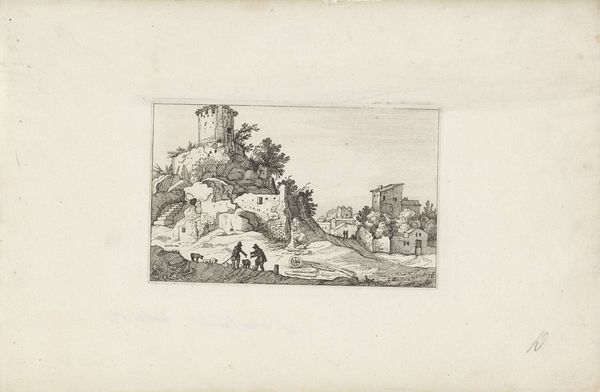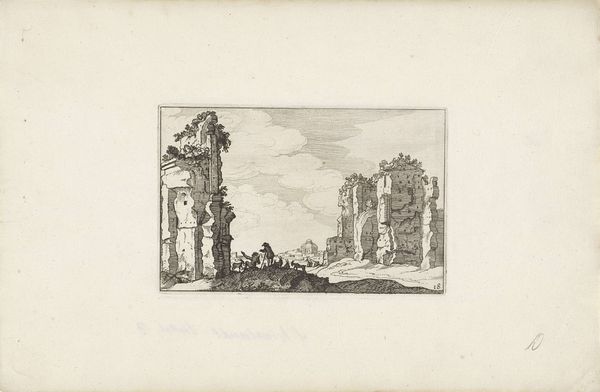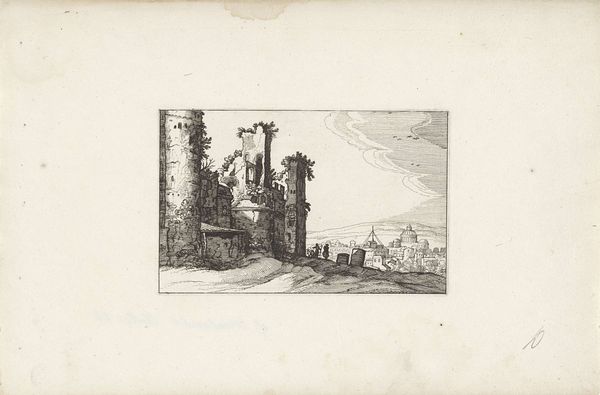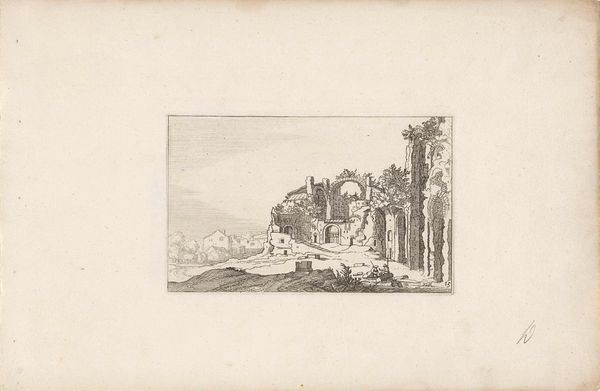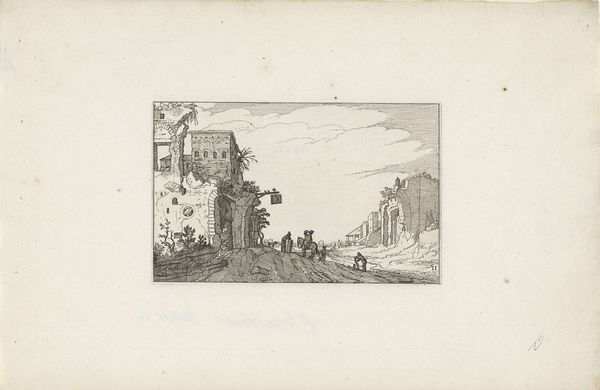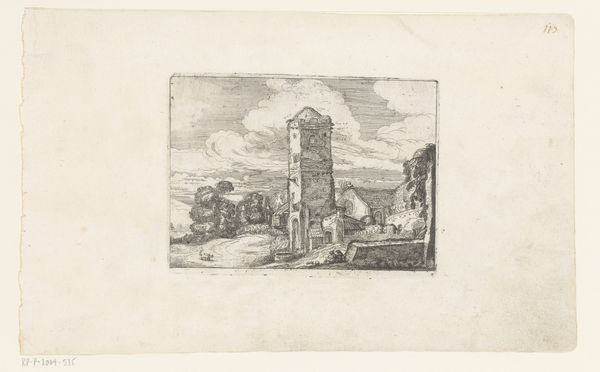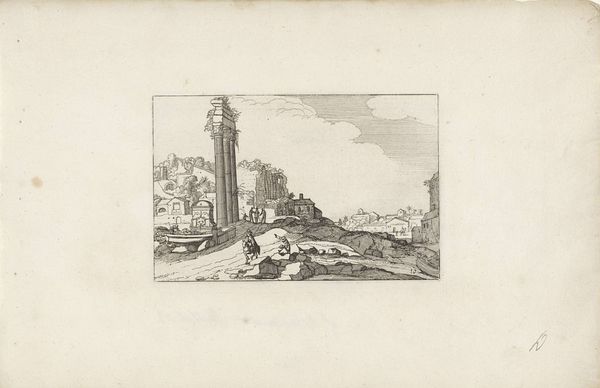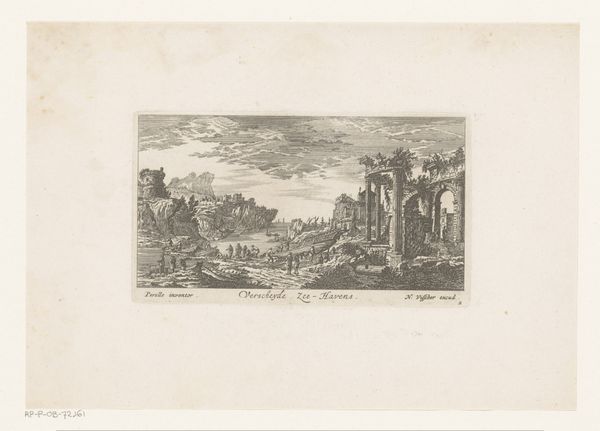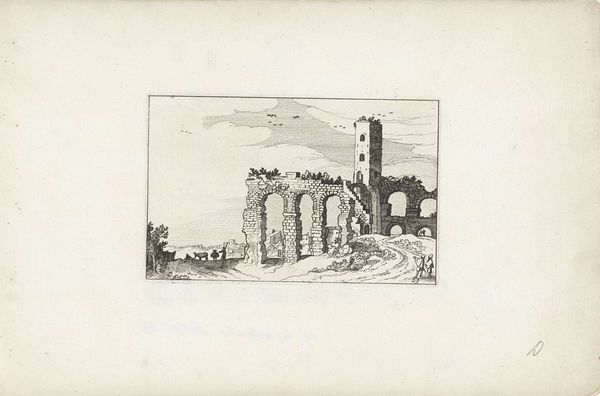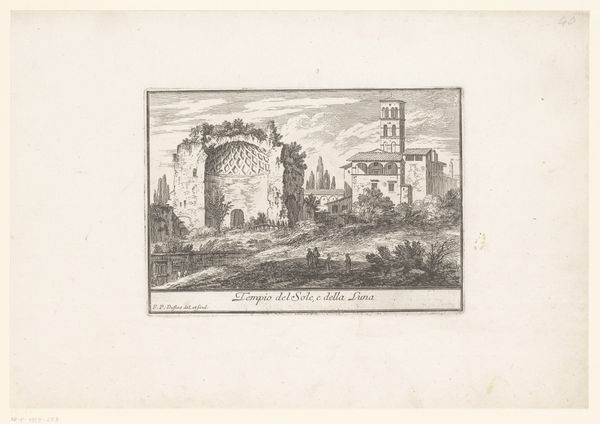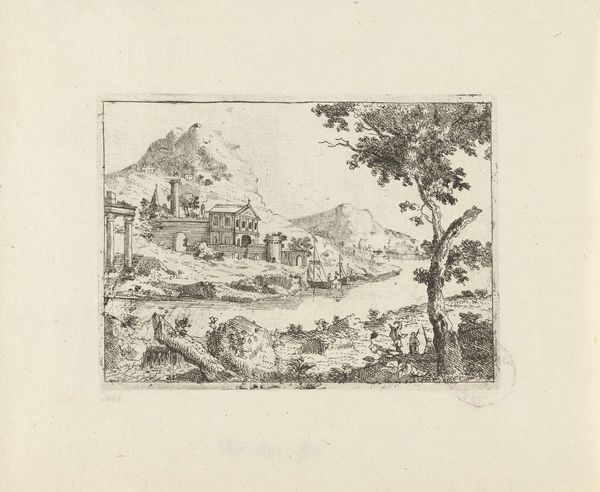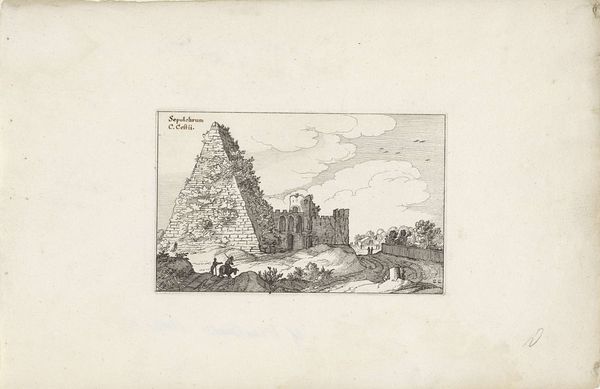
drawing, print, paper, ink, engraving
#
drawing
#
narrative-art
#
baroque
#
dutch-golden-age
# print
#
old engraving style
#
landscape
#
paper
#
ink
#
pen-ink sketch
#
cityscape
#
engraving
Dimensions: height 100 mm, width 157 mm
Copyright: Rijks Museum: Open Domain
Claes Jansz. Visscher created this print of a ruin with arches, using etching, sometime before his death in 1652. Here we have a romantic image of decay. But what do ruins mean for a 17th-century Dutch audience? In this period, the Dutch Republic was consolidating its power, and building a new, independent, and distinctly Protestant identity, after a long struggle for independence from the Catholic Spanish Empire. The ruin becomes a symbol of the transience of earthly power. The remains of a grand structure, possibly Roman, are being overgrown by the natural landscape. The figures in the foreground seem almost unconcerned. They represent a new, mercantile, more mobile society, one less attached to place and tradition. The ruin also offers a stark moral lesson but also an opportunity to consider the rise and fall of empires. These themes are crucial to understanding the social and political context in which this print was made. To learn more, one could examine Dutch emblem books from this period, with their visual allegories of worldly vanity.
Comments
No comments
Be the first to comment and join the conversation on the ultimate creative platform.
